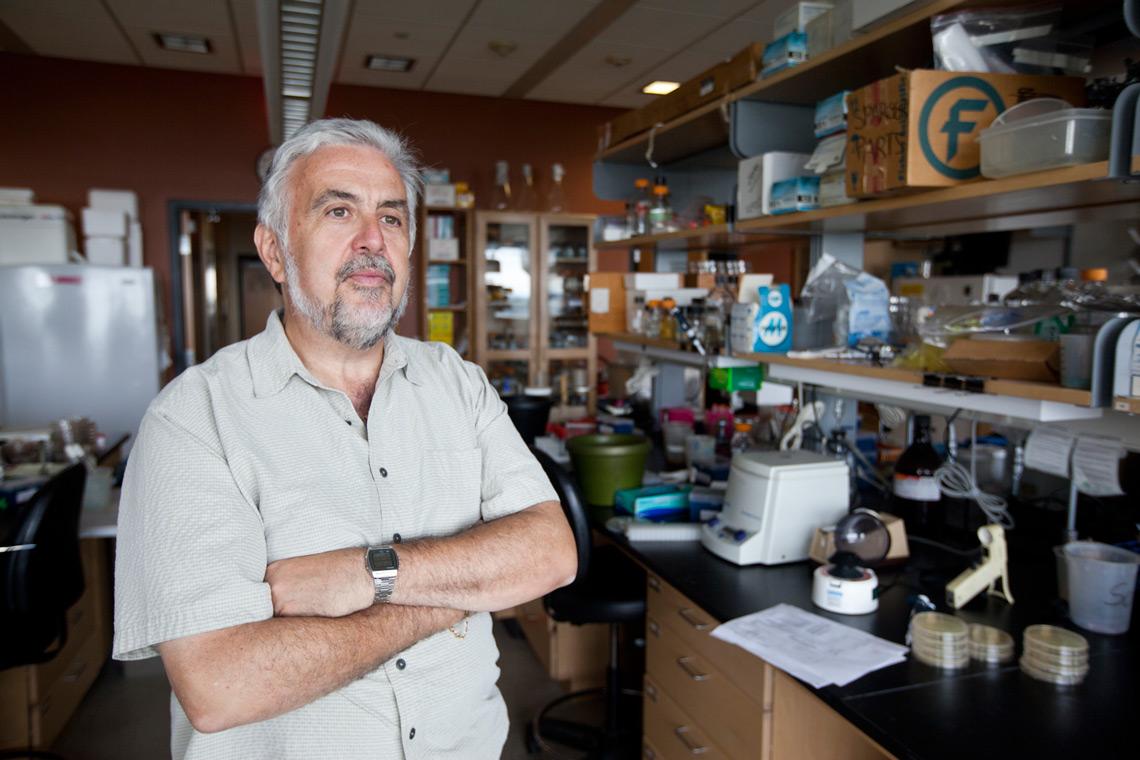
At the core of lignin – the organic glue that gives plant tissues their structure and sturdiness – is a chemical knot that, like any good knot, resists untangling. It’s a fact of nature but it’s also a challenge for researchers at the Great Lakes Bioenergy Research Center (GLBRC), many of whom are working on ways to break down lignin quickly and efficiently to improve the value and economics of biofuels.
As lignin is the component of plant biomass that is the hardest to degrade, it has long been an obstacle to the basic process of acquiring the plant sugars used to produce biofuels, often hampering the efficiency of fuel conversion processes. More specifically, the chemical knot created by lignin’s formation makes it difficult for many known enzyme catalysts to unlock and release the knots within lignin.
A recent analysis of enzymes that are proficient in degrading lignin knots may, however, change all that. GLBRC researchers have published a paper entitled “Stereochemical Features of Glutathione-dependent Enzymes in the Sphingobium sp. Strain SYK-6 β-Aryl Etherase Pathway” in the Journal of Biological Chemistry. The team was able to identify and define special features of lignin-degrading proteins by studying glutathione-dependent β-aryl etherases, enzymes that are members of the glutathione S-transferase (GST) superfamily. These are enzymes used by some bacteria to feed on lignin.
GLBRC director and researcher, Tim Donohue, who contributed to the paper, explained the potential impact of the finding.
“Being able to release pieces from the lignin polymer increases our chances of using lignin for agricultural, industrial, and biotechnological purposes. In other words, it creates new possibilities in providing much-needed products for tomorrow’s biorefineries, including compounds that could be used or converted into high value chemicals, biofuels, or fuel additives.”
Of course, the economic implications of the work are also significant. As lignin can account for up to one-third of the carbon in biomass, making use of lignin by producing valuable products from it could also be a game changer for the economic return of a cellulosic biofuels refinery.
“The Center has a research portfolio geared towards providing value from as much of the plant biomass as possible,” Donohue said. “An oil refinery, for example, produces as much value as possible from every drop of oil in a barrel. By analogy, we see creating products from lignin as helping tomorrow’s biorefineries extract value from every gram of carbon in plant biomass.”
GLBRC researchers also found that, as these enzymes unravel the lignin knot, they produce a set of products that retain a specific “stereochemistry” or orientation in reactive bonds. Since the chemical properties of these enzymes are somewhat novel, the enzymes might also be of industrial interest, providing the starting material for specialty chemicals that are hard or costly to make by traditional routes.
This research was funded by the Great Lakes Bioenergy Research Center (GLBRC), one of three Department of Energy Bioenergy Research Centers created to make transformational breakthroughs that will form the foundation of new cellulosic biofuels technology. For more information on the GLBRC, visit www.glbrc.org.